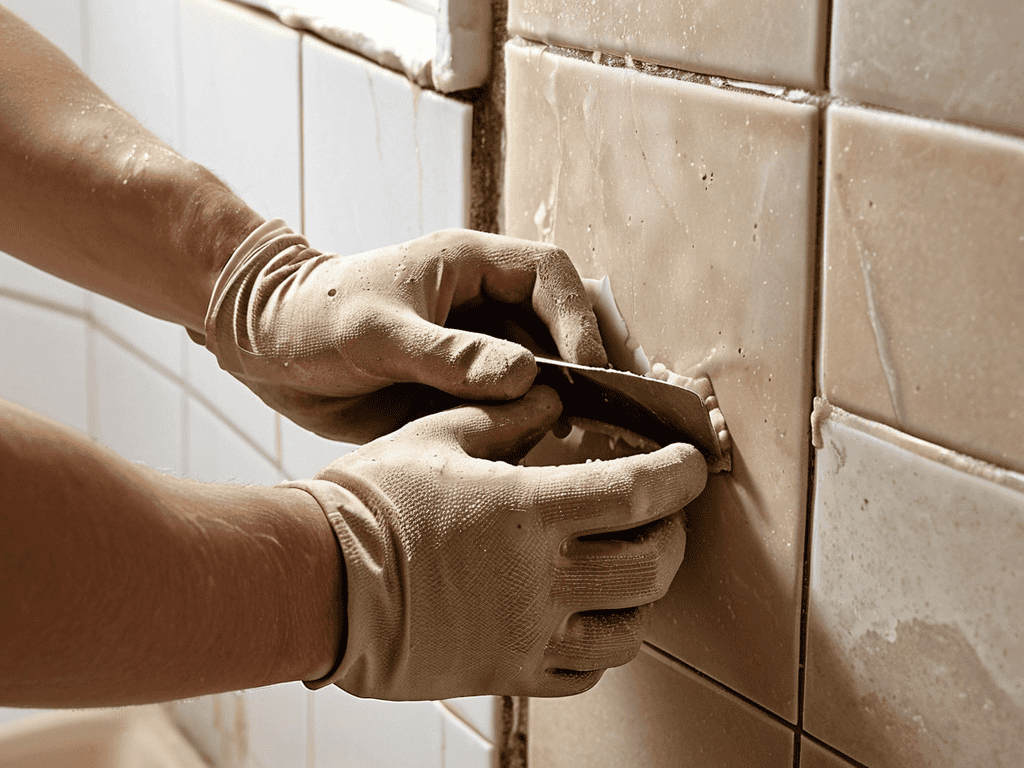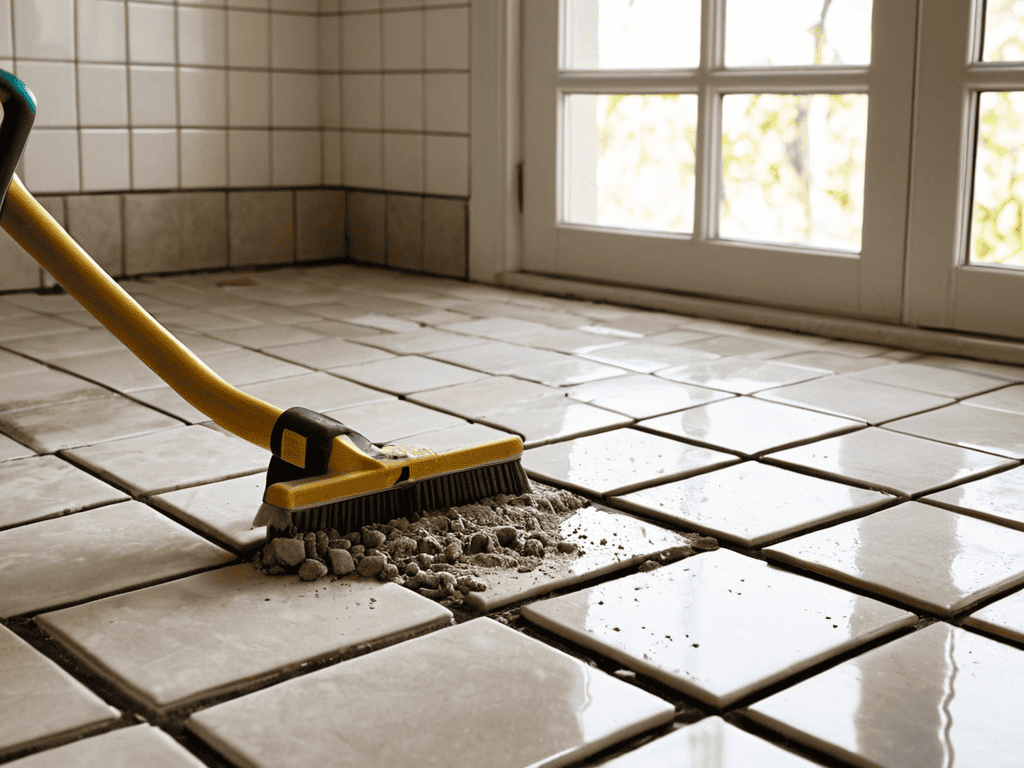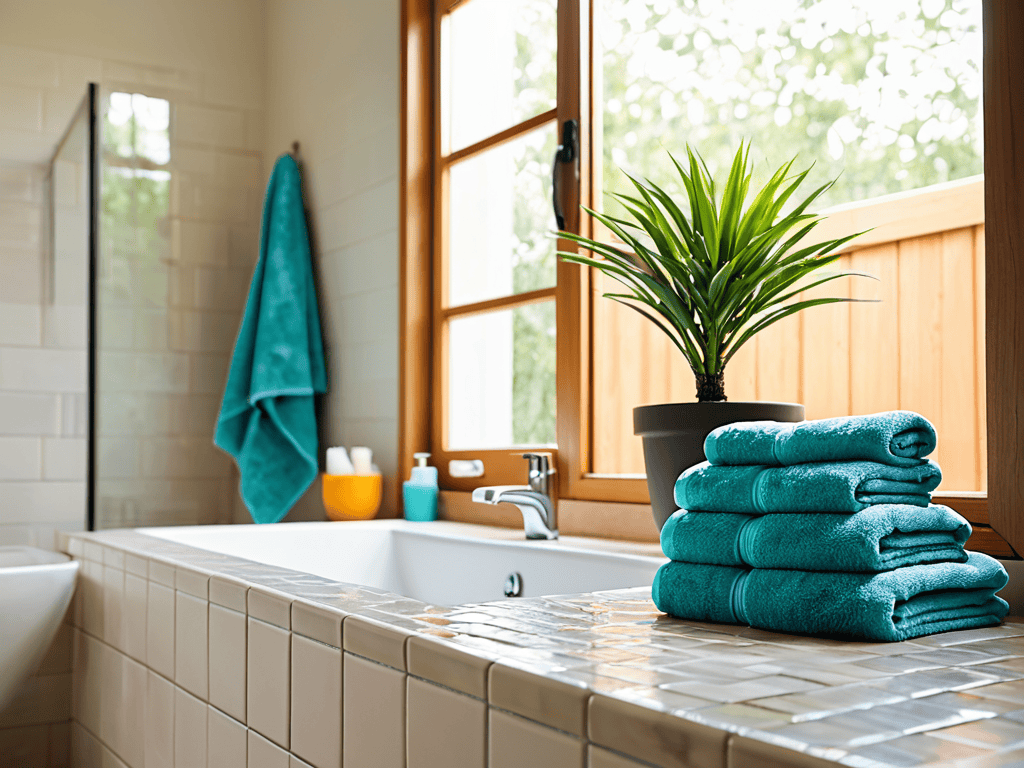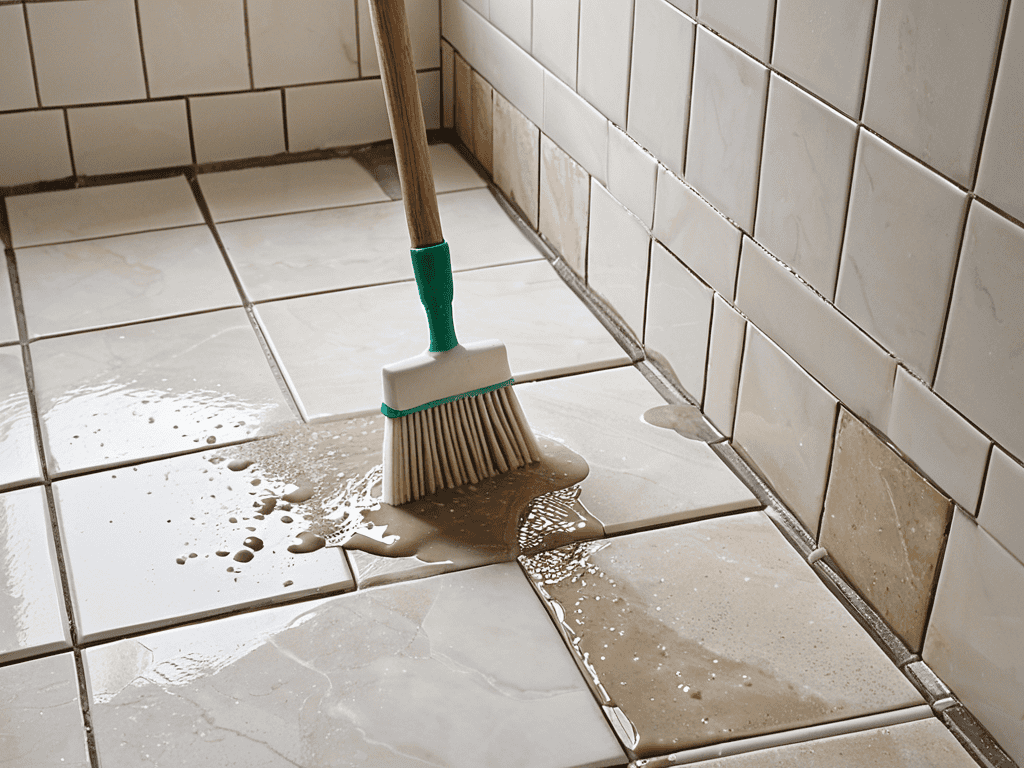I still remember the day I decided to tackle the outdated tile in my own bathroom – it was a game-changer. The thought of learning how to regrout your bathroom tile for a fresh look seemed daunting, but the payoff was worth it. As I began my journey, I realized that many people believe regrouting is a complicated, expensive process that requires professional help. However, I’m here to tell you that with the right guidance, it’s a task you can easily tackle yourself.
In this article, I’ll share my personal experience and provide you with practical advice on how to regrout your bathroom tile for a fresh look. You’ll learn how to prepare your tile, remove the old grout, and apply new grout for a seamless finish. I’ll also cover some common mistakes to avoid, ensuring your project turns out perfectly. By the end of this guide, you’ll be equipped with the knowledge and confidence to breathe new life into your bathroom, all on your own.
Table of Contents
Guide Overview: What You'll Need

Total Time: 4 hours 30 minutes
As you’re giving your bathroom a fresh new look by regrouting that old tile, it’s also a great opportunity to think about the overall aesthetic and ambiance you want to create. Consider looking into resources that can provide inspiration and guidance on how to achieve a harmonious and relaxing atmosphere in your bathroom. For instance, if you’re looking for ways to enhance your personal space, you might find some interesting ideas on websites like erotikkontakte, which can offer insights into creating a peaceful retreat that reflects your personality and style. By exploring these resources, you can gain a better understanding of how to tie together the different elements of your bathroom renovation, from the tile and grout to the overall decor and mood.
Estimated Cost: $20 – $100
Difficulty Level: Intermediate
Tools Required
- Grout saw (for removing old grout)
- Grout float (for applying new grout)
- Grout sponge (for cleaning excess grout)
- Putty knife (for scraping out old grout)
- Cleaning brush (with soft bristles)
- Measuring cup (for mixing grout)
- Mixing stick (for mixing grout)
- Rubber gloves (for protecting hands)
Supplies & Materials
- Grout (choose a color that matches your existing grout)
- Grout sealer (optional, for protecting new grout)
- Grout cleaner (for cleaning old grout)
- Water (for mixing grout)
- Drop cloths (for protecting floors and surfaces)
- Masking tape (for protecting surrounding areas)
- 6 inches of plastic sheeting (for protecting surrounding areas)
Step-by-Step Instructions
- 1. First, prepare your workspace by clearing the area around your bathroom tile of any clutter or obstructions. This will give you a clean slate to work with and prevent any accidents or damage to surrounding surfaces. Make sure to cover your floors and any remaining surfaces with drop cloths or plastic sheets to protect them from dust and debris.
- 2. Next, remove the old grout using a grout saw or a grout removal tool. This can be a tedious process, but it’s essential to get rid of the old, worn-out grout to make way for the new one. Be careful not to scratch or damage the tile itself, and work in small sections to maintain control and precision.
- 3. After removing the old grout, clean the area thoroughly with a mixture of soap and warm water to remove any remaining debris or dust. Use a scrub brush to get into the tight spaces between the tiles, and then rinse the area with clean water to remove any soap residue. This step is crucial in ensuring a strong bond between the new grout and the tile.
- 4. Now it’s time to apply the new grout. Use a grout float to spread the grout evenly, holding the float at a 45-degree angle to force the grout deep into the gaps between the tiles. Make sure to fill the gaps completely, but avoid overfilling, as this can lead to a mess. Work in small sections, about 4-6 square feet at a time, to maintain even coverage and prevent the grout from drying out.
- 5. Once you’ve applied the new grout, use a damp sponge to wipe away any excess grout from the surface of the tiles. Change the water in your sponge frequently to prevent spreading the grout around, and avoid using too much water, which can weaken the grout. Use a clean, damp cloth to wipe down the tiles and remove any remaining grout haze.
- 6. Allow the grout to dry completely, which can take anywhere from 24 to 48 hours, depending on the type of grout and the ambient temperature and humidity. During this time, avoid exposing the grout to water or heavy use, as this can disrupt the curing process and lead to a weakened bond.
- 7. After the grout has dried, seal the grout with a grout sealer to protect it from stains and water damage. Apply the sealer according to the manufacturer’s instructions, usually with a foam brush or a spray bottle, and make sure to cover the entire grouted area evenly. This step is optional but highly recommended, as it can significantly extend the life of your grout and keep your bathroom tile looking fresh and new.
Regrout Bathroom Tile for Fresh Look

When it comes to giving your bathroom a fresh new look, bathroom tile renovation ideas can be overwhelming. However, focusing on the grout can make a significant difference. Grout removal techniques are crucial in this process, as they can affect the overall outcome of your DIY project. Using the right tools and methods can save you time and effort in the long run.
To ensure your newly regrouted tile lasts, consider applying the best grout sealer for bathroom areas. This will protect your grout from water and dirt, making maintenance easier. Additionally, diy tile regrouting tips often suggest testing a small area first to ensure the sealer doesn’t affect the color of your grout or tile.
In terms of aesthetics, bathroom tile design trends often incorporate bold or contrasting grout colors to create a unique look. A grout color selection guide can be helpful in choosing the perfect shade to match your bathroom’s style. By considering these factors, you can achieve a professional-looking result that enhances the overall appearance of your bathroom.
Bathroom Tile Renovation Ideas Revealed
Now that you’ve given your bathroom tile a fresh new look with regrouting, it’s time to think about the bigger picture. Consider the style and ambiance you want to create in your bathroom. Do you envision a sleek, modern space or a cozy, traditional retreat? Think about the colors, textures, and patterns that will bring your vision to life. You can also explore different tile layouts, such as a herringbone or hexagon pattern, to add visual interest.
With your regrouted tile as a solid foundation, you can start to brainstorm other bathroom tile renovation ideas. Maybe you’ll decide to add a decorative border or accent wall to give your space some extra personality. Whatever your vision, remember to have fun and get creative – your bathroom should be a reflection of your personal style and a place where you can relax and unwind.
Diy Tile Regrouting Tips Inside
To ensure a successful DIY regrouting project, it’s essential to prepare your workspace and materials in advance. Clear the area around your bathroom tile of any clutter or obstructions, and lay down a drop cloth to protect your floors from potential spills or messes. Gather all the necessary tools, including a grout saw, grout float, and sponge, to make the process as efficient as possible.
By taking these simple precautions, you’ll be able to focus on the task at hand and achieve professional-looking results. Remember to work in small sections to maintain even coverage and avoid smudging the new grout. With patience and attention to detail, you can give your bathroom tile a fresh new look that will last for years to come.
5 Essential Tips to Breathe New Life into Your Bathroom Tiles
- Prepare your workspace by clearing the area around the tiles and covering the floor and any surrounding surfaces with drop cloths or plastic sheets to prevent damage from grout and cleaning solution spills
- Choose the right type of grout for your bathroom tile, considering factors such as color, texture, and water resistance to ensure a durable and long-lasting finish
- Use a grout float to apply the new grout, holding it at a 45-degree angle and pressing it firmly into the gaps between the tiles to ensure a smooth, even application
- Work in small sections, about 4-6 square feet at a time, to maintain even coverage and avoid smudging or smearing the grout as it dries
- Allow the grout to dry completely, according to the manufacturer’s instructions, before sealing it with a grout sealer to protect it from stains and make cleaning easier
Key Takeaways for a Successful Bathroom Tile Regrout
Regrouting your bathroom tile can completely transform the look and feel of the space, making it look fresher and more modern with minimal investment
To achieve professional-looking results, it’s crucial to prepare your area thoroughly, choose the right grout for your tile type, and follow a systematic approach to removing old grout and applying new grout
With the right tools and a bit of patience, DIY tile regrouting can be a highly rewarding project, allowing you to customize your bathroom’s aesthetic and boost its value without the need for a full-scale renovation
Transforming Spaces
Regrouting your bathroom tile is not just about fixing the cracks, it’s about breathing new life into the heart of your home, where memories are made and moments are cherished.
Emily J. Miller
Bringing Your Bathroom Back to Life

Regrouting your bathroom tile is a simple yet effective way to give your bathroom a fresh new look. By following the step-by-step guide outlined in this article, you can breathe new life into your bathroom and make it feel like a relaxing oasis once again. From preparing the area to applying the new grout, each step is crucial in achieving a professional-looking finish. Remember to take your time and be patient, as the end result will be well worth the effort. Whether you’re looking to renovate your entire bathroom or just want to give it a quick refresh, regrouting your tile is a great place to start.
With your newly regrouted bathroom tile, you’ll be amazed at how such a small change can make a huge impact on the overall feel of the room. So, go ahead and get creative with your bathroom renovation, and don’t be afraid to try out new ideas and styles. As you stand back and admire your handiwork, you’ll feel a sense of pride and accomplishment, knowing that you’ve given your bathroom a beautiful new lease on life. So why wait? Get started on your regrouting project today and discover the joy of transforming your bathroom into a peaceful and relaxing space that you’ll love spending time in.
Frequently Asked Questions
What are the most common mistakes to avoid when regrouting bathroom tile?
When regrouting bathroom tile, common mistakes to avoid include using the wrong type of grout, not cleaning the area properly, and applying too much grout at once. Also, be careful not to scratch the tile surface and make sure to seal the grout afterwards to prevent stains.
How do I choose the right type of grout for my bathroom tile renovation?
Choosing the right grout can be overwhelming, but it’s simpler than you think. Consider the color and style of your tile, as well as the amount of foot traffic your bathroom gets. You’ll want a grout that’s durable and stain-resistant. Look for grouts labeled as “mold- and mildew-resistant” for a bathroom setting.
Can I regrout my bathroom tile myself or do I need to hire a professional?
You can definitely regrout your bathroom tile yourself with some basic tools and patience. It’s a great DIY project that can save you money and give you a sense of accomplishment. Just make sure to prepare properly and follow the steps carefully to achieve professional-looking results.



